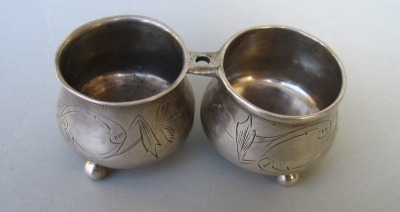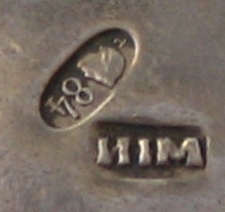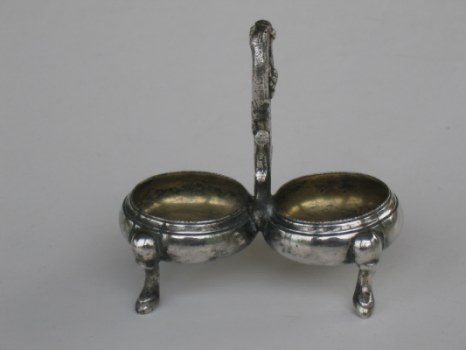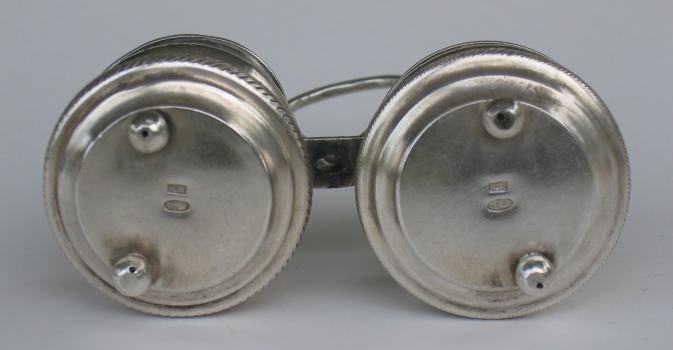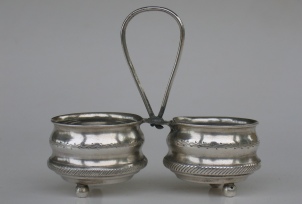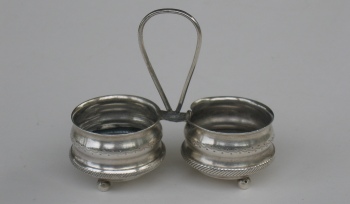 ASSOCIATION OF SMALL COLLECTORS OF ANTIQUE SILVER
ASSOCIATION OF SMALL COLLECTORS OF ANTIQUE SILVERASCAS
| Members' Window # 43 |
|
click on images to enlargeTHE MISSING CENTRE PIECE OF A RUSSIAN DOUBLE
SALT-CELLAR
|
A
double salt cellar
with a missing centre part, silversmith I I M (transcribed
to latin letters),
|
It is true that combined salt-cellars in a pair may be combined with other functions. But the first guess is that the centre part is a handle for the cellars to be easy moved from one part of the table to another, or maybe to another serving table.
Now let us examine a sister to the Busetto's piece made by another silversmith’s workshop.
Bottom of double
salt cellar, each cellar standing on two ball
feet, stamps on both by Ivan Zinovjev Manilov,
|
It was common by Russian silversmiths; for sure did they have standard production of tableware but also varieties of their successful sales. Having a look in profile, the cellars obviously have a handle for carrying it. But at the same time we observe that the handle is clumsy soldered to the bridge connecting the two cellars together. It is for sure so that the handle once has been lost from the cellar bridge and the soldered back again.
A closer examination gives proof to that, the soldering is done later. But, there is strong evidence that it is the original handle that is soldered to its original body. What is the evidence for this second hypothesis? There are two.
In the Russian Imperial Regulation of assaying from 1896 and onwards, the manual used by the Moscow assaying office on how and where to hallmarking the precious metal was strictly codified, a general principle is that any object made of soldered parts should have a stamp on each. The reason is obvious, it should make it impossible for the silver smith to apart any piece from the object and change this piece to one with lower silver content. For double saltcellars it stipulates that both cellars shall be stamped on the bottom, and the handle. As we have seen this is the case, and we have also found makers initials IZM on the handle. Following there should be an assayers stamp also, but this is not to be found on this very thin handle. This does not mean that the handle is falsified; it was not uncommon that the assayers deviated from the regulation if impossible or unpractical to put his stamp there.
But the important evidence here is that the maker initials is there, as the general stamping rule was that the maker’s initials should be on all parts to be hallmarked, and it gives us strong reason to believe that the centre hole in the bridge between Busetto’s saltcellar is for a handle.
